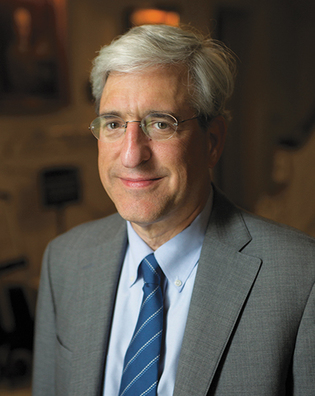 loading
loading
Q&A: Peter SaloveyOn artifacts and the artsThe president talks about the importance of Yale’s collections. The Yale Alumni Magazine regularly holds a conversation with Yale president Peter Salovey ’86PhD to provide a forum in which alumni can learn his views. (Interviews are conducted both in person and by e-mail and condensed for print.)  Mark OstowIn this issue, Salovey talks about Yale’s museums and collections. View full imageYale Alumni Magazine: What is your view of why universities have museums and collections? Peter Salovey: Our collections’ main purpose is to provide excellent educational opportunities for our students. Faculty use these world-class collections—the Yale University Art Gallery, the Yale Center for British Art, the Peabody Museum of Natural History, the Beinecke Rare Book and Manuscript Library, and the archives of the Sterling Memorial Library—extensively in their teaching. There is no replacement for seeing an object or specimen or work of art for yourself. Our collections serve a crucial second purpose by providing raw material for scholars. These are the paramount reasons for our collections because they reflect the core missions of the university: teaching and research. Educating people beyond the walls of our classrooms is another great benefit of our collections. When residents of New Haven and elsewhere come to see Yale’s collections—and thousands visit every year—they have a phenomenal educational experience. It is almost always free, and it is one way we can share our university with the world—part of my vision for Yale. Y: Yale has made huge investments in the public mission of the collections. S: Absolutely. Over 150,000 people visit the Peabody each year, including tens of thousands of schoolchildren. For many, the Peabody has become Yale’s front door. Kids fall in love with dinosaurs, fossils, natural history, going to museums—and something quite lofty about Yale stays with them as well. The renovation we have planned for the Peabody is therefore critical. Y: Yale recently received the Governor’s Patron of the Arts Award. S: The Connecticut Arts Council presents the award on behalf of the governor, and this year Yale was selected in recognition of our work in the arts across disciplines—our schools of art, architecture, drama, and music; our collections; and our many extracurricular arts programs and venues open to the general public. I asked my staff to provide a list of our public programs; it is eight pages long, single-spaced. We have a program at the Center for British Art for children with autism and a program for older adults on “Making Sense of Art.” We have a Gutenberg Bible on display at the Beinecke, after-school programs in science, and the Discovery Room at the Peabody—where the motto is “Please touch”—and many, many others. Two features make Yale’s collections uniquely important in our state and region. One is accessibility: the great majority of our museums and galleries are cost-free for visitors. Just consider the Yale University Art Gallery and the Yale Center for British Art: Except for the Smithsonian, I don’t believe you can see such quality and breadth of art without an admission fee anywhere else in the world. The second key feature is that art on our campus enhances art in the New Haven community. Yale’s arts programs help attract other arts programs. You can hear terrific music at Café Nine, or you can take lessons at the Neighborhood Music School or the Creative Arts Workshop. It is an arts ecosystem whose component parts support each other and thrive. New Haven is the arts hub for Connecticut, maybe for all of southern New England. Y: Do you have a favorite collection? S: I walk through so many of the collections frequently, and there are many that I love. One of my favorite methods of teaching through the collections is an exercise I developed in my early years teaching introductory psychology. I would ask students to visit a Yale collection and, with the help of a guide, to find a way in which mental health or mental illness was depicted in a work of art. Then I asked them to write an essay about how mental illness or mental health was understood in that place at that time. Sometimes they were guessing, but the point was to think about what they were learning in my course by interpreting works of art. Could there be a place better than Yale for learning those skills? I doubt it.
The comment period has expired.
|
|